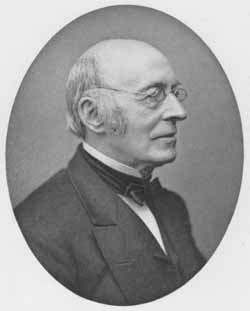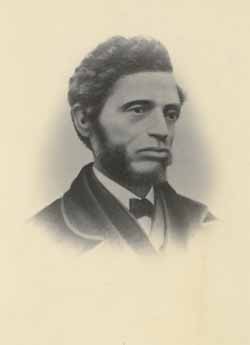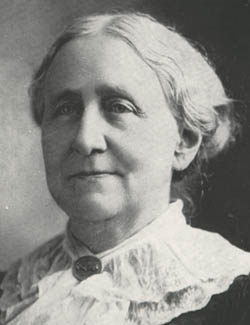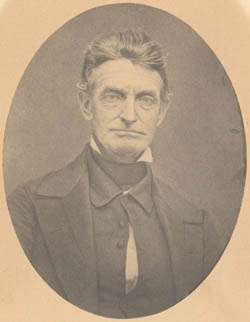
 The branded hand of Captain Jonathan Walker
The branded hand of Captain Jonathan Walker
People of many different backgrounds were involved in the Antislavery movement in some capacity, from violent activism to organized denunciation. Jonathan Walker, a Harwich-born reformer who was tried and sentenced for assisting seven enslaved people in escaping Florida via ship in 1844, was branded with the letters "S.S." for "slave stealer." A daguerreotype of his hand is held in the MHS's collections. Also included are portraits of Louisa Gilman and Ellis Gray Loring, the latter of which helped to organize the New England Anti-Slavery Society, Wendell Phillips, an antislavery orator and longtime backer of the Liberator, and Catherine Sargent, artist, abolitionist, and one of several leaders of the Boston Female Anti-Slavery Society, among many others.
Many portraits featured on this site come from the Portraits of American Abolitionists collection, which consists of 742 photographs, photomechanicals, engravings, lithographs, and other images of men and women involved in the abolition debate in the nineteenth century. Included are many renowned abolitionists and reformers from all walks of life, as well as proponents of enslavement, colonization, the disunion of the United States, and other related issues.
The abolitionists in this collection held a wide range of views. William Lloyd Garrison, a leader in the movement, as a young man initially supported the emigration of Black Americans to Africa but eventually spent the majority of his life advocating the principles of immediate emancipation and nonviolent resistance. Unitarian minister Theodore Parker advocated defiance of the infamous Fugitive Slave Law of 1850--the law, supported by Daniel Webster, that mandated the return of freedom seekers to their enslavers in the South.
 William Lloyd Garrison
William Lloyd Garrison
 Harriet Tubman
Harriet Tubman
 William C. Nell
William C. Nell
Among the African-Americans represented in this collection are "conductors" of the Underground Railroad such as William Wells Brown, William C. Nell, William Still, and Harriet Tubman. Others include influential lecturers and activists like Frederick Douglass and Sojourner Truth. The collection contains images of many women, including Susan B. Anthony, Anna E. Dickinson, Lucretia Coffin Mott, Ernestine L. Rose, Elizabeth Cady Stanton, Lucy Stone, Harriet Beecher Stowe, and Frances Wright, who played a vital role in the antislavery movement, writing and speaking in many venues not only about abolition, but also women's rights, temperance, and pacifism.
Other highlights of the collection include portraits of most of the United States presidents between 1829 and 1869; Antoinette L. Brown Blackwell, the first U.S. woman ordained as a minister; Joseph Carpenter, a Quaker who assisted freedom seekers; Henry Clay, drafter of the Missouri Compromise; Robert Gould Shaw, commander of the all-Black 54th Massachusetts Volunteer Infantry during the Civil War; and the eccentric journalist Charles Calistus Burleigh, who reputedly refused to cut his hair until slavery was abolished.
The politicians, writers, freedom seekers, free Black people, abolitionists, and reformers in this collection represent many nuanced views on slavery, abolition, and the position of Black people in the United States. The ardent pro-slavery stance of John C. Calhoun, John Jay's early support of gradual abolition, and John Brown's advocacy of violent insurrection and insistence on full equality between the races are just a few examples.
 Antionette L. Brown Blackwell
Antionette L. Brown Blackwell
 John Brown
John Brown
 Charles Calistus Burleigh
Charles Calistus Burleigh
The collection includes more than one portrait of some individuals, including six portraits of Thomas Wentworth Higginson. (Please see a brief online biography of Thomas Wentworth Higginson.) Images of all individuals are available through the collection guide to the collection that includes an alphabetical list of subjects and a list of the individuals depicted by category (e.g. antislavery editors, freedom seekers) compiled by Francis Jackson Garrison.